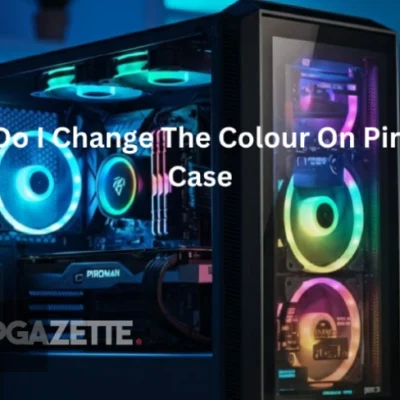
Who Informed Nintendo of Fusee: The Unpatchable Exploit
Who informed Nintendo of Fusee? This question has puzzled gamers and tech enthusiasts since the discovery of a major vulnerability in Nintendo Switch consoles. The Fusee exploit opened up a world of possibilities for hackers and modders, but it also posed a significant threat to Nintendo’s carefully crafted ecosystem. Let’s dive into this intriguing story and uncover the mystery behind one of the most significant exploits in gaming history.
What is Fusee?
Fusee, short for “Fusée Gelée,” is a game-changing exploit discovered in Nintendo Switch consoles. It’s not just any ordinary hack. Fusee is like a skeleton key that unlocks the Switch’s deepest secrets. This powerful tool lets users run custom software, install homebrew apps, and even load different operating systems on their Switch.
But Fusee isn’t just about playing around with your Switch. It’s a serious vulnerability that affects the console’s very core. The exploit targets the Nvidia Tegra X1 chip, which is the brain of the Switch. By exploiting a flaw in this chip, Fusee can bypass all of Nintendo’s security measures.
Why is this such a big deal? Well, imagine if someone gave you a master key to your school. You could go anywhere, do anything, and the usual rules wouldn’t apply. That’s what Fusee does for the Switch. It gives users total control over their consoles, which is both exciting and worrying.
The Vulnerability Explained
The Fusee vulnerability is like finding a secret passage in a fortress. It’s a flaw in the Tegra X1 chip’s boot ROM, which is the first code that runs when you turn on your Switch. This code is supposed to be super secure, but Fusee found a way to sneak past its defences.
Here’s how it works: When the Switch starts up, there’s a tiny window where it’s checking for devices to connect to. Fusee takes advantage of this moment by sending a specially crafted message. This message tricks the Switch into running whatever code the hacker wants.
The clever (or scary, depending on your view) part is that this happens before any of Nintendo’s security checks kick in. It’s like sneaking into a party before the bouncer arrives. Once you’re in, you can do pretty much anything you want.
Why is this such a headache for Nintendo? Because the vulnerability is in the hardware itself. It’s not something they can fix with a simple software update. Every Switch made before a certain date has this flaw baked right into its chips.
Discovery Timeline
The story of Fusee’s discovery is like a high-tech treasure hunt. It all started in early 2018 when hackers and security researchers began poking around the Nintendo Switch’s defenses. They were looking for any weak spots they could exploit.
In January 2018, a group called fail0verflow hinted they’d found a way into the Switch. They even showed off a picture of Linux running on the console. This was the first sign that the Switch’s armour wasn’t as tough as Nintendo thought.
But the real bombshell dropped in April 2018. That’s when Kate Temkin and her team at ReSwitched announced they’d discovered the Fusee Gelée exploit. They didn’t just find a way in; they found a way that couldn’t be patched out.
Here’s a quick timeline of the key events:
- January 2018: fail0verflow teases a Switch exploit
- March 2018: Temkin starts hinting at a major discovery
- April 2018: Fusee Gelée is officially announced
- June 2018: Full details of the exploit are made public
The speed of these events caught many by surprise. In just a few months, the Switch went from being a locked-down fortress to a playground for hackers and modders.
Key Players
The Fusee story isn’t just about code and chips. It’s about the people behind the discovery. Let’s meet the main characters in this tech drama:
| Name | Role |
|---|---|
| Kate Temkin | A security researcher who discovered Fusee Gelée |
| Team ReSwitched | Hacking group working on Nintendo Switch exploits |
| Team Xecuter | Rival hacking group |
| Fail0verflow | Another hacking team released a similar exploit |
Kate Temkin is the star of this show. She’s the security researcher who led the charge in discovering and documenting Fusee Gelée. Temkin isn’t just a hacker; she’s also an advocate for responsible disclosure. She worked hard to balance the excitement of discovery with the need to protect users.
Team ReSwitched, Temkin’s group, played a crucial role in developing and refining the exploit. They’re like the research and development team in this story, always pushing the boundaries of what’s possible.
Team Xecuter and fail0verflow are like rival explorers racing for the same treasure. They were working on similar exploits, which added pressure and excitement to the whole process. Their involvement shows just how many eyes were on the Switch, looking for ways in.
These groups aren’t just random hackers. They’re skilled researchers and developers who spend countless hours probing systems for weaknesses. Their work often leads to improved security for everyone, even if that’s not always their main goal.
Technical Details of the Exploit
Now, let’s get into the nitty-gritty of how Fusee works. Don’t worry, we’ll keep it simple. Imagine the Switch as a fortress with a tiny, hidden doggy door. Fusee found that doggy door and figured out how to squeeze through it.
The exploit targets the Tegra X1 chip’s USB recovery mode. This mode is supposed to be a safe way to recover a bricked device. But Fusee turns it into a backdoor. Here’s how:
- The hacker puts the Switch into recovery mode.
- They send a specially crafted message through the USB port.
- This message overflows a buffer in the chip’s memory.
- The overflow allows the hacker to run their code.
It’s like tricking a guard into thinking you’re supposed to be there, then sneaking past while they’re distracted. Once the code is running, it can do almost anything. Install custom firmware, run unauthorized games, or even turn the Switch into a full-fledged computer.
The real kicker? This all happens so early in the boot process that none of Nintendo’s security measures can stop it. It’s like getting into the castle before anyone’s even woken up to guard it.
Nintendo’s Response
When Nintendo found out about Fusee, they must have felt like someone had stolen their secret recipe. Their response was quick and multifaceted. They had to protect their product, their reputation, and their bottom line.
First, Nintendo acknowledged the issue. They didn’t go into details, but they let people know they were aware of the vulnerability. This was smart. It showed they were on top of things without giving away too much information.
Next, they started working on a fix. But remember, this wasn’t a simple software patch. The vulnerability was in the hardware itself. So, Nintendo had to think bigger. They started planning for new versions of the Switch that wouldn’t have this flaw.
In the meantime, Nintendo took legal action. They went after websites and individuals who were sharing information about the exploit. It was like playing whack-a-mole, trying to shut down sources of information as fast as they popped up.
Nintendo also beefed up their online security. They started looking for signs that people were using hacked Switches and banning them from online services. It was a clear message: use this exploit, and you’ll lose access to a big part of what makes the Switch fun.
But perhaps most importantly, Nintendo didn’t panic. They kept releasing great games and supporting their console. They knew that for most users, the risk of bricking their Switch or losing online access wasn’t worth the potential benefits of hacking it.
Impact on Nintendo Switch Consoles
The Fusee exploit shook up the world of Nintendo Switch owners. Suddenly, their consoles could do things Nintendo never intended. It was like finding out your car could fly if you pressed the right buttons.
For some users, Fusee was a dream come true. They could run emulators, play homebrew games, and even use their Switch as a portable computer. It opened up a whole new world of possibilities. Modders and hackers had a field day, creating all sorts of custom software and tweaks.
But for many, Fusee was more trouble than it was worth. Using the exploit could void your warranty. Worse, it could get you banned from Nintendo’s online services. No more online multiplayer, no more eShop. For a lot of gamers, that was too high a price to pay.
The exploit also raised concerns about piracy. With Fusee, it became possible to run unauthorized copies of games. This worried game developers and publishers. They feared losing sales to pirated copies.
Nintendo had to walk a fine line. They needed to protect their platform without alienating their users. They couldn’t stop people from using Fusee, but they could make it less attractive. By improving their online services and releasing must-have games, they gave people reasons to stick with the official ecosystem.
In the end, Fusee’s impact was significant but not catastrophic. It changed how people viewed the Switch’s security, but it didn’t derail the console’s success. If anything, it pushed Nintendo to make their next systems even more secure.
Unpatchable Nature of the Vulnerability
The most mind-blowing thing about Fusee is that it’s unmatchable. It’s like finding out your house has a door that can’t be locked, no matter what you do. This is what set Fusee apart from other exploits.
Why can’t it be patched? Because the vulnerability is in the console’s boot ROM. This is a chip that contains code that runs when the Switch first turns on. It’s designed to be read-only. Once it’s manufactured, it can’t be changed.
This means every Switch made before a certain date has this vulnerability. No software update can fix it. The only way to “patch” it is to make new Switches with updated hardware. It’s like having to rebuild your house to fix that unlockable door.
For Nintendo, this was a nightmare scenario. They couldn’t just push out an update and call it a day. They had to start thinking about hardware revisions and how to protect future consoles.
For hackers and modders, it was a goldmine. They knew that no matter what Nintendo did, this exploit would always work on millions of Switches out in the wild. It gave them a permanent way into the system.
This unmatchable nature also raised interesting questions about device ownership and rights. If a console has a built-in flaw that lets users do whatever they want with it, who really controls the device? It’s a debate that’s still going on today.
Legal Implications
The Fusee exploit didn’t just cause technical headaches. It also stirred up a legal storm. Nintendo, like many tech companies, takes a dim view of people messing with their hardware. But the law around this kind of hacking isn’t always clear-cut.
On one side, you have Nintendo. They argue that exploits like Fusee violate their copyright and terms of service. They say it enables piracy and hurts their business. Nintendo has a history of aggressively protecting its intellectual property, and Fusee was no exception.
On the other side, you have hackers and modders. They argue that once you buy a device, you should be able to do what you want with it. They say that hacking and modding drive innovation and extend the life of hardware.
The legal battle played out in several ways:
- Nintendo went after websites hosting information about Fusee.
- They banned hacked consoles from their online services.
- There were discussions about whether using Fusee violated the Digital Millennium Copyright Act (DMCA).
But here’s the tricky part: Fusee itself doesn’t copy or distribute any of Nintendo’s copyrighted code. It just exploits a flaw in the hardware. This made it harder for Nintendo to claim direct copyright infringement.
The legal implications of Fusee go beyond just this one exploit. They touch on bigger questions about consumer rights, digital ownership, and the limits of copyright law. These are issues that courts and lawmakers are still grappling with today.
Community Reaction
The reveal of Fusee sent shockwaves through the gaming community. It was like finding out your favourite superhero had a secret weakness. Reactions were all over the map, from excitement to concern to outright confusion.
Hackers and modders were thrilled. Fusee gave them unprecedented access to the Switch’s internals. They could now run custom software, emulators, and even alternative operating systems. For them, it was like being handed the keys to a shiny new playground.
Many regular gamers were curious but cautious. The idea of adding new features to their Switch was tempting. But the risks of bricking their console or getting banned from online play made many think twice. It was a classic case of “look, but don’t touch” for a lot of people.
Game developers had mixed feelings. Some are worried about piracy and lost sales. Others sawthe potential for new kinds of games and apps that Nintendo might not normally allow. It opened up discussions about the balance between platform control and developer freedom.
Nintendo fans were divided. Some felt the exploit was a betrayal of the company they loved. Others saw it as a way to get more out of their favourite console. It led to heated debates on forums and social media about the ethics of console hacking.
The broader tech community watched with interest. Fusee wasn’t just about gaming. It raised important questions about device security, consumer rights, and the cat-and-mouse game between companies and hackers.
Overall, Fusee turned the Switch community upside down for a while. It changed how people thought about their consoles and sparked conversations that are still going on today.
Subsequent Hardware Revisions
After Fusee rocked the boat, Nintendo didn’t just sit back and watch. They rolled up their sleeves and got to work on fixing the problem. But remember, this wasn’t a simple software patch. They had to change the hardware itself.
Nintendo’s first move was to start producing new Switches with an updated Tegra chip. This new chip didn’t have the flaw that Fusee exploited. It was like changing the locks after someone copied your key. New Switches coming off the production line were now immune to Fusee.
But Nintendo didn’t stop there. They used this as a chance to improve the Switch in other ways too. Later revisions of the console included:
- Better battery life
- More efficient processors
- Improved screen technology
These changes weren’t just about security. They were about making the Switch better overall. It’s like when a city fixes a pothole and decides to repave the whole street while they’re at it.
Nintendo also released entirely new models of the Switch. The Switch Lite, a handheld-only version, came out in 2019. The OLED model, with its fancy new screen, launched in 2021. These new versions gave Nintendo a chance to build in even more security features from the ground up.
For consumers, this meant that buying a new Switch became a bit of a guessing game. You couldn’t be sure if you were getting an old, vulnerable model or a new, patched one. It led to some people specifically seeking out older models they could hack, while others made sure to get the latest, most secure versions.
Lessons for Console Security
The Fusee saga taught some hard lessons about console security. It was like a wake-up call for the whole gaming industry. Here are some key takeaways:
- Hardware security is crucial. Software can be patched, but hardware flaws are much harder to fix. Companies need to think about security from the very beginning of the design process.
- No system is unhackable. Even with the best security, determined hackers will find a way in. The goal is to make it as difficult as possible.
- Balance is key. Too much security can make devices hard to use or repair. Too little leaves them open to exploitation. Finding the right balance is an ongoing challenge.
- Transparency matters. How a company responds to security issues can be just as important as the issues themselves. Clear communication builds trust with users.
- The mod community isn’t all bad. While companies often see modders as a threat, they can also help identify security flaws and drive innovation.
- Online services are a powerful tool. By controlling access to online features, companies can discourage the use of exploits without completely locking down hardware.
- Security is an arms race. As soon as one vulnerability is patched, hackers start looking for the next one. It’s a never-ending process of improvement.
These lessons didn’t just apply to Nintendo. The whole gaming industry took note. You can bet that when Sony and Microsoft were designing their next-gen consoles, they were thinking about how to avoid a Fusee-like situation.
The Mystery of the Informant
Now, let’s circle back to our big question: Who informed Nintendo of Fusee? The truth is, we don’t know for sure. It’s one of the biggest mysteries in the whole Fusee story. But we can make some educated guesses.
One theory is that it was an insider in the hacking community. Maybe someone who felt the exploit was too powerful or worried about its potential for abuse. It could have been a case of a hacker’s conscience getting the better of them.
Another possibility is that it was a security researcher who discovered the flaw independently and reported it to Nintendo. Many tech companies have bug bounty programs that reward people for finding and reporting vulnerabilities.
Some people think Nintendo might have found out about Fusee on their own. They’ve got smart people working for them, after all. Maybe they spotted the vulnerability during their security checks and started working on a fix before the public even knew about it.
There’s also a chance that multiple people informed Nintendo. In the world of hacking and security research, it’s not uncommon for several groups to discover the same thing around the same time. Nintendo might have heard whispers from various sources.
One thing we do know is that Kate Temkin, the researcher who publicly announced Fusee, gave Nintendo a heads-up before going public. But she wasn’t the informant we’re talking about. She only told them after the exploit was already developed, as part of responsible disclosure practices.
The identity of the original informant remains a mystery. It’s like a real-life whodunit in the tech world. And like many good mysteries, it might never be fully solved. The person who tipped off Nintendo might prefer to stay in the shadows, away from the spotlight of both the hacking community and the corporate world.
This mystery adds an extra layer of intrigue to the whole Fusee story. It reminds us that behind all the code and hardware, there are people making decisions, taking risks, and sometimes, keeping secrets.
Conclusion
The story of Fusee and the mystery of who informed Nintendo is a fascinating tale of technology, security, and human ingenuity. It shows how vulnerable even the most secure systems can be, and how the actions of a few individuals can impact millions of users worldwide.
Fusee changed the game for Nintendo and the Switch. It forced them to rethink their approach to hardware security and pushed them to create better, more secure consoles. For the hacking community, it was a landmark achievement that opened up new possibilities for customization and experimentation.
As for who originally tipped off Nintendo, we may never know. But in a way, that’s okay. The mystery keeps the story alive and reminds us that in the world of tech and gaming, there’s always more going on behind the scenes than we realize.
The Fusee exploit is now a part of gaming history. It’s a reminder of the constant battle between security and accessibility, between corporate control and user freedom. As technology continues to advance, we can be sure that new exploits will be found, new battles will be fought, and new mysteries will emerge. The game never really ends; it just moves to the next level.






